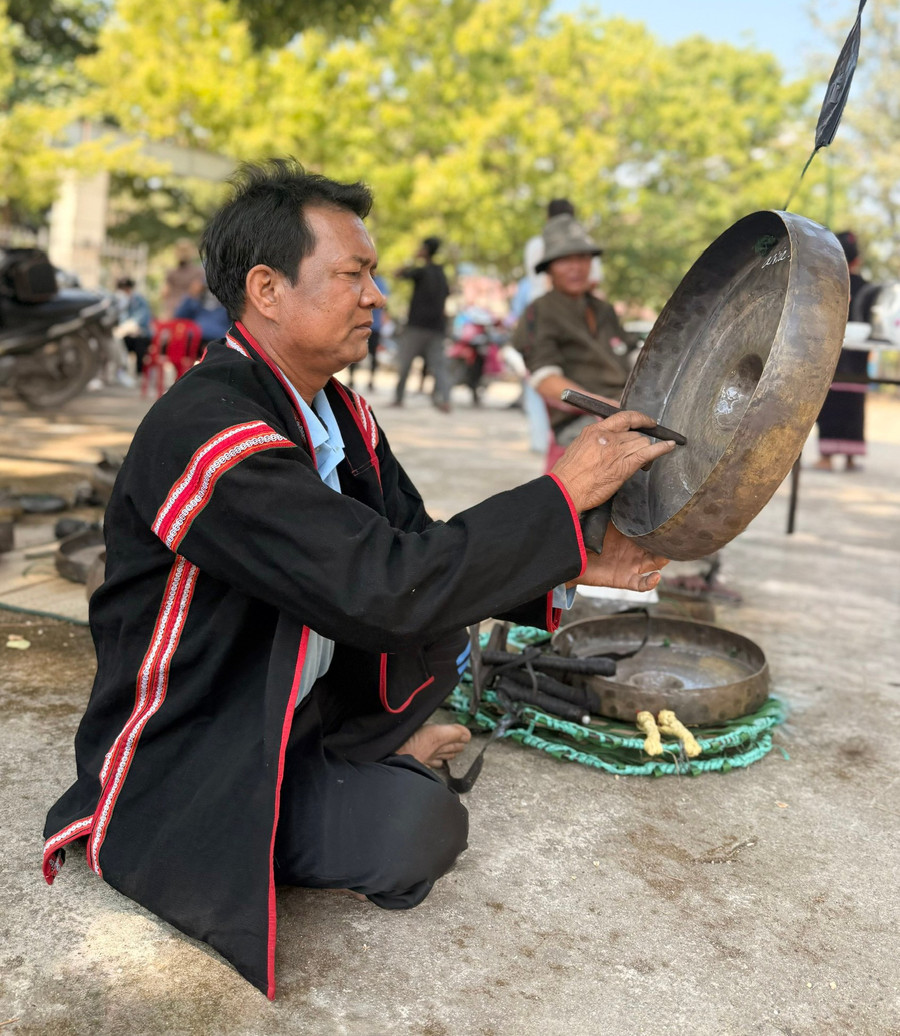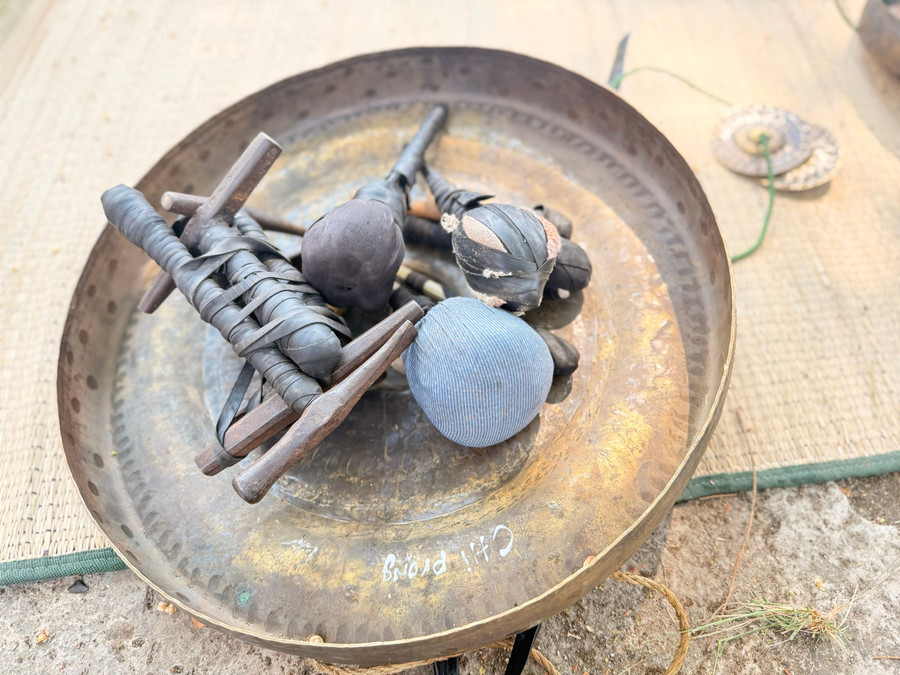The image of the artisan enthusiastically tuning the gong in the corner of the communal house left an unforgettable impression on me.

Up to this point, artisan Ksor Kok has been in the gong tuning profession for more than 20 years. He is an excellent student of Meritorious Artisan Nay Phai - the province's gong tuning master that everyone knows and admires. Recalling the early days of learning gong tuning from master Nay Phai, Mr. Kok said: The learning time lasted continuously from 2 to 3 months. After that, he continued to stay with his teacher for more than 1 year because he was a good student and passionate about gong culture. During that time, his teacher took him to all the villages to help him tune the gongs to gain more experience.
In the corner of the communal house, artisan Ksor Kok carefully uses a hammer to tap each gong to test the sound. He patiently taps the hammer, then uses a mallet to test the sound. He repeats this many times until he feels the sound is pleasing to his ears before moving on to adjusting another gong. After adjusting, the gong is tested to see if the pitch is correct according to the scale and many people need to play the gong together to compare the sound for harmony.
Artisan Ksor Kok shared: Gong tuning looks quite simple, but to be able to practice fluently, it requires a long journey of learning and persistent practice. In addition, the gong tuner must also have talent and a strong passion for gongs. To become a gong tuner, one not only needs skillful hands but more importantly, one must have a delicate and precise ear for sound. From there, one knows which part of the gong needs to be adjusted, how many times to hit to correct the out-of-tune sound. The gong tuner must also have the ability to perform gongs, understand each gong, and distinguish between improved gongs, traditional gongs or ancient gongs.

For artisan Ksor Kok, in addition to improving his technique, his tools are also extremely important. The cloth bag containing his gong tuning tools is quite simple but is an inseparable item. In his bag are 4 hammers, the hammer handles are wrapped with elastic bands and a few carefully wrapped cloth-covered mallets. Every January, Mr. Kok holds a ceremony to worship his gong tuning tools. The offerings include a jar of wine and a chicken. He arranges his gong tuning tools in the middle of an open, spacious space and recites a prayer to the hammer god to preserve the soul of the gong, helping the artisan to be patient, have good ears, and skillful hands; to keep the hammer and mallet always new and durable over the years so that he can tune the gong.
Currently, there are few skilled gong tuners like Mr. Ksor Kok. Meanwhile, teaching the art of gong tuning to the next generations is difficult, because those who love and are passionate about the traditional values of the nation are becoming increasingly rare. Among Mr. Kok's students who have learned the gong tuning profession over the years, only two have succeeded. They are Mr. Ksor Mang (Ayun Pa town) and Mr. Nay Nuyn (Krong Pa district). "They have the advantage of knowing how to sing folk songs, play instruments and perform gongs, so their ability to absorb and appreciate sounds is quite quick. Currently, they can all tune gongs skillfully and make a living from the profession," said artisan Ksor Kok.
In fact, the preservation and promotion of the value of the Central Highlands gong cultural space has a great contribution from gong tuners like Mr. Ksor Kok. They are the ones who are always concerned with the profession of “healing” gongs, to help the sound of gongs resonate forever, becoming an indispensable spiritual food for the people and tourists from near and far.
Source: https://baogialai.com.vn/ksor-kok-nghe-nhan-chinh-chieng-tai-ba-o-krong-pa-post322855.html

























![[Photo] National Assembly Chairman attends the seminar "Building and operating an international financial center and recommendations for Vietnam"](https://vphoto.vietnam.vn/thumb/1200x675/vietnam/resource/IMAGE/2025/7/28/76393436936e457db31ec84433289f72)











































































Comment (0)